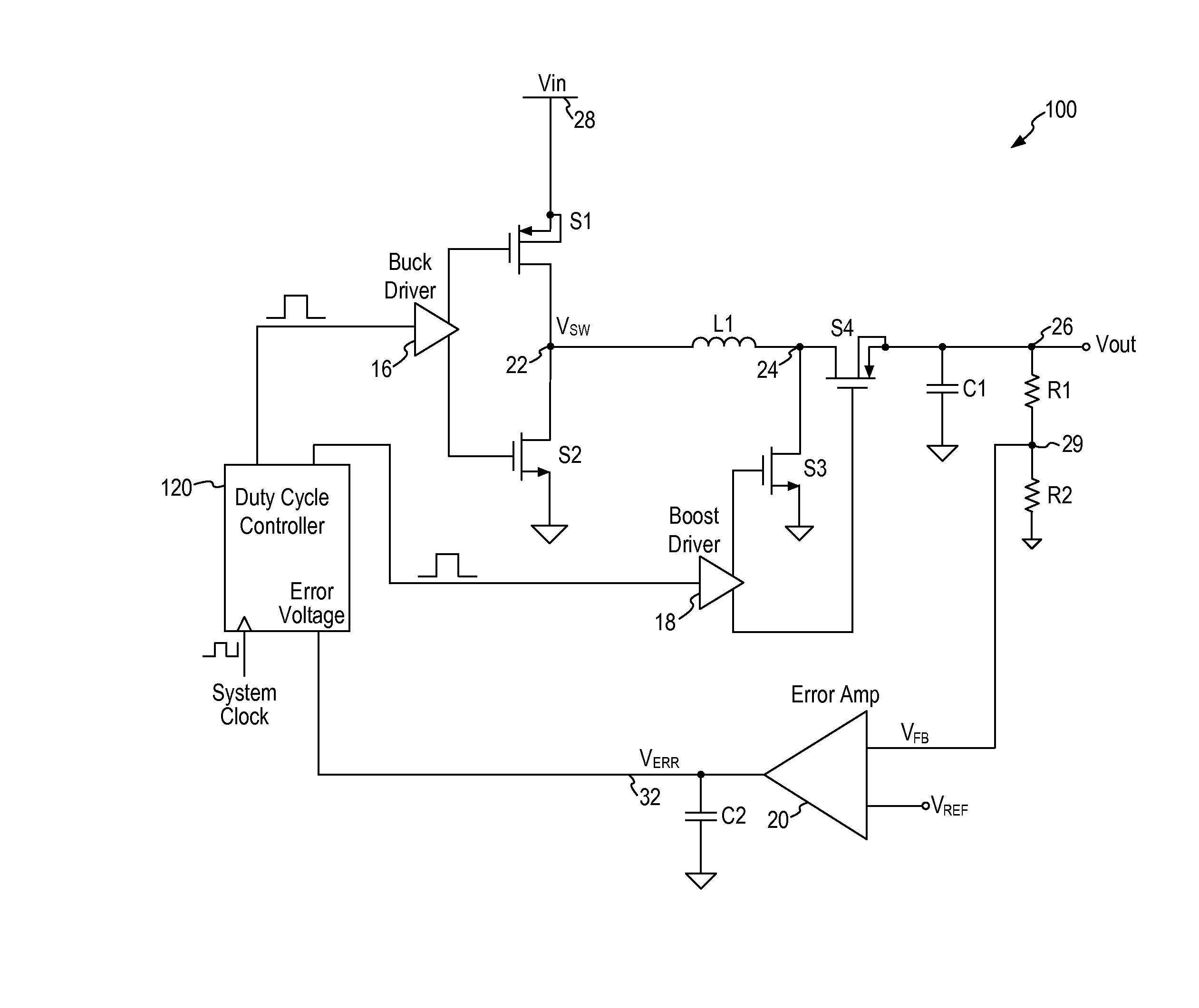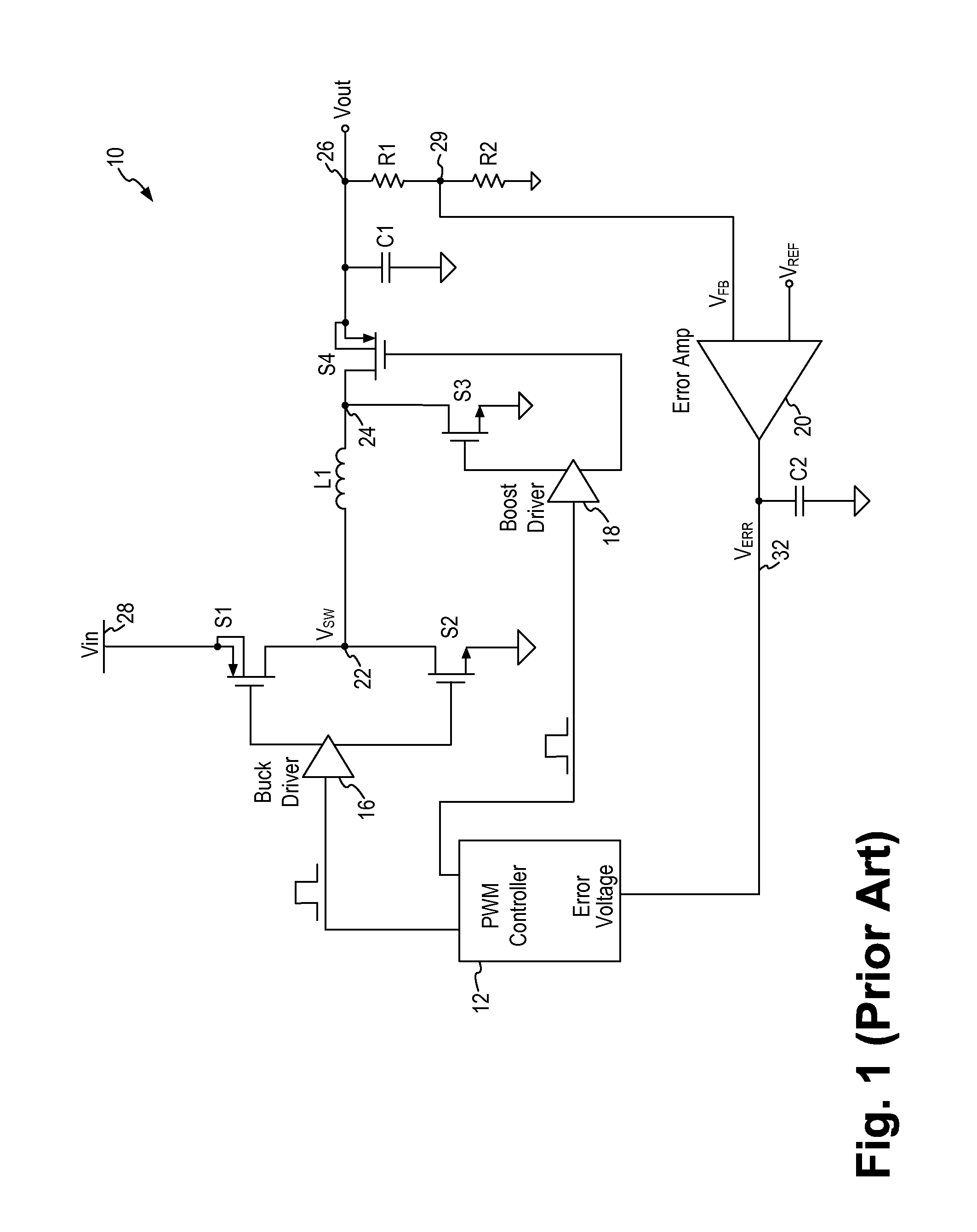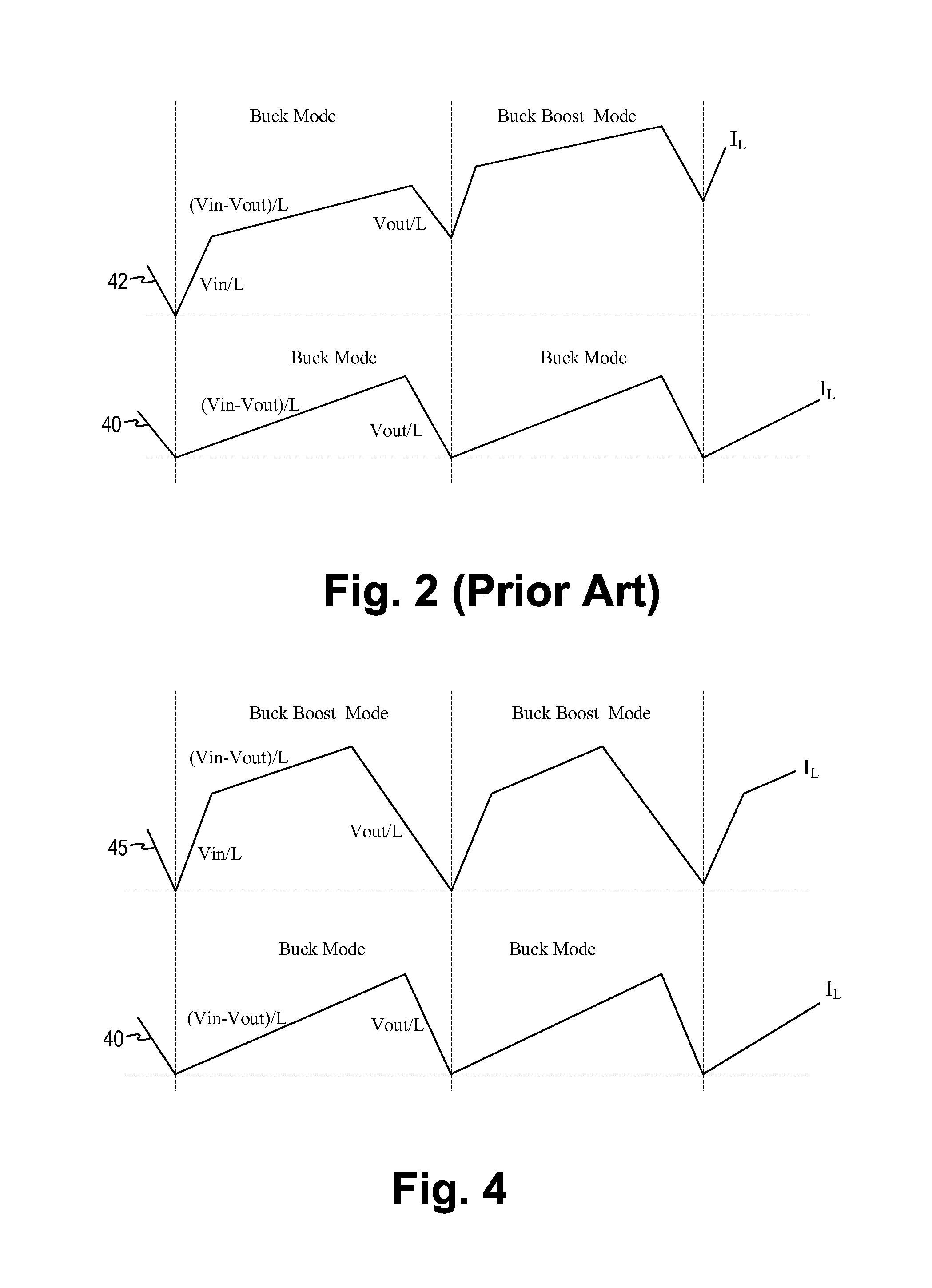Buck-Boost Converter Using Timers for Mode Transition Control
a converter and timer technology, applied in the field of switching regulators, can solve the problems of small glitches in the output voltage vout, and inductor current and output voltage ripple to undesirably increas
- Summary
- Abstract
- Description
- Claims
- Application Information
AI Technical Summary
Problems solved by technology
Method used
Image
Examples
Embodiment Construction
[0033]In accordance with the principles of the present invention, a buck-boost converter incorporates a duty cycle controller using timers to control the transition between Buck, Buck-Boost and Boost modes. More specifically, the timers in the duty cycle controller measure the duty cycle of the buck and boost power switches to determine the transition between the different operation modes. In embodiments of the present invention, a duty cycle timer and an offset timer are used to establish the transition thresholds between the operation modes. Furthermore, in some embodiments, hysteresis is implemented using the offset timer to prevent chattering or transient jumping between the operation modes.
[0034]When a buck-boost converter crosses over the boundary of different operation modes, the duty cycle of the converter must be well controlled in order to avoid chaotic or unwanted behavior. According to embodiments of the present invention, the duty cycle controller in the buck-boost conv...
PUM
 Login to View More
Login to View More Abstract
Description
Claims
Application Information
 Login to View More
Login to View More - R&D
- Intellectual Property
- Life Sciences
- Materials
- Tech Scout
- Unparalleled Data Quality
- Higher Quality Content
- 60% Fewer Hallucinations
Browse by: Latest US Patents, China's latest patents, Technical Efficacy Thesaurus, Application Domain, Technology Topic, Popular Technical Reports.
© 2025 PatSnap. All rights reserved.Legal|Privacy policy|Modern Slavery Act Transparency Statement|Sitemap|About US| Contact US: help@patsnap.com



